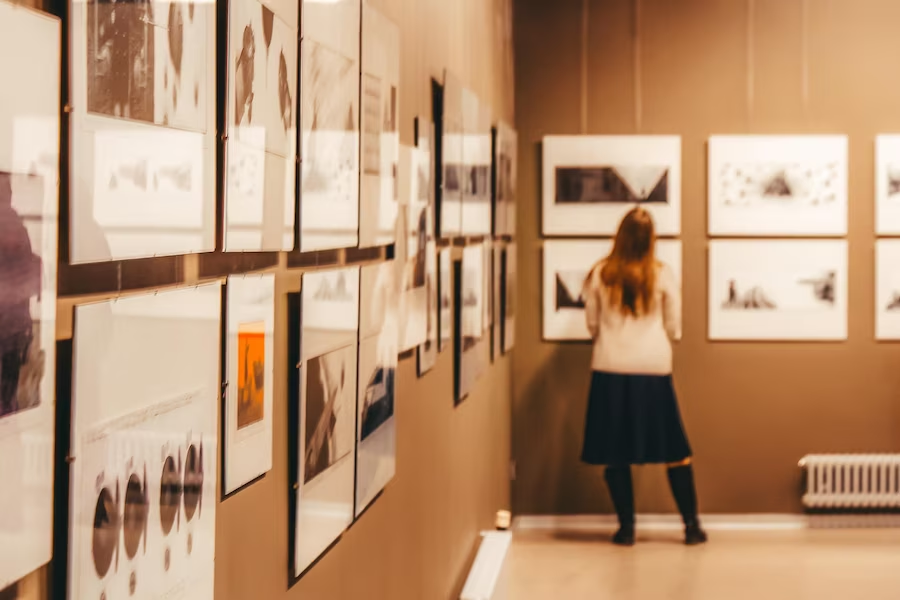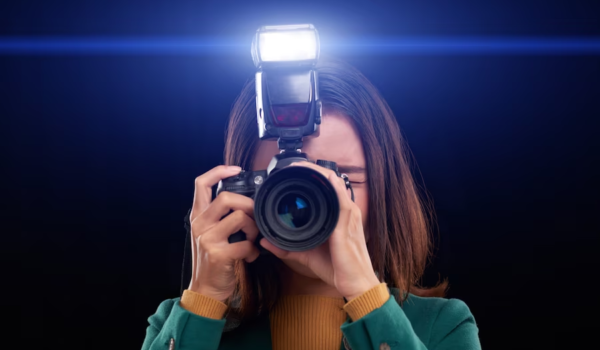Have you ever walked into a museum and seen signs scattered around that say ‘No Flash Photography?’ While it may seem like an inconvenience, there’s a compelling reason behind this ubiquitous rule. Museums, as caretakers of precious artifacts and artworks, have an essential role in preserving these pieces for future generations to admire and study. Flash photography, surprisingly, can pose a significant threat to these items’ longevity.
Let’s delve deeper into the reasons behind the ‘No Flash Photography’ rule:
- Light Damage: Most museums house a variety of artifacts, from age-old paintings to delicate textiles, historical documents, and even fossils. These items, due to their age and fragility, are particularly susceptible to damage by light. The flash from a camera emits a brief but intense light that, when exposed repeatedly, can contribute to the deterioration of these pieces. This light can cause fading, discoloration, and even physical degradation of materials;
- Distraction: Flash photography can cause considerable distraction for other visitors. The sudden, bright light interrupts the ambiance of the museum and can disrupt others’ experiences. It can also disturb those who are engrossed in reading informational panels or examining intricate details of an exhibit;
- Security: Flash photography can potentially be used as a means to aid art thieves. Detailed, high-quality photos can provide thieves with information about the museum’s layout and the location of security devices. Moreover, the repeated use of flash can potentially obscure security camera footage.
The Science Behind Light Damage
When you capture a moment with a flash from your camera, it might seem harmless, but behind that brilliant burst of light lies a complex and fascinating world of scientific interactions. Light, at its core, is a form of energy, and like any energy, it can wield immense power, often leading to chemical reactions when it meets with different materials. The consequences of flash photography can be far-reaching, especially when it comes to preserving precious artifacts and artworks. Let’s delve into the science of light damage to better understand its impact and discover ways to safeguard our cherished treasures for generations to come.
The Interplay of Light and Materials
To truly grasp the effects of flash photography, we must first explore how light interacts with materials. When intense light strikes an object, be it a timeless painting or a delicate textile, it sets off a chain of events. This intense light can initiate chemical reactions within the materials, which may seem imperceptible at first but can manifest over time as fading and discoloration. The reaction’s severity can depend on the type of material, as organic materials like paper, wood, and textile fibers are more vulnerable to a process known as photo-oxidation.
The Peril of Photo-Oxidation
Photo-oxidation is a key factor in light damage, primarily affecting organic materials. When these materials are exposed to light, especially the high-energy wavelengths present in flashes, they undergo a series of oxidation reactions. This process leads to the formation of highly reactive molecules called free radicals, which are notorious for their role in damaging the molecular structure of materials. Over time, this degradation can alter the appearance and integrity of the cherished objects, eroding their beauty and historical significance.
The Dual Threat: Intensity and Duration of Exposure
As with many things in life, it’s not just about how strong the impact is, but also about how long it lasts. The same holds true for light damage caused by flash photography. While the flash from a camera may be momentary, the cumulative effect of repeated flashes from numerous visitors can accelerate the deterioration process. The intensity of each flash, combined with the duration of exposure over days, months, or even years, can lead to irreversible harm.
Preserving Treasures: Mitigation Strategies
The preservation of art, artifacts, and precious heirlooms is a shared responsibility. By understanding the science of light damage, we can take proactive measures to protect these treasures and ensure they endure for generations:
| Strategy | Details |
|---|---|
| Strategic Lighting | Implementing carefully designed lighting systems can reduce the need for flash photography and limit the exposure of sensitive materials to damaging light. |
| UV Filtering | Using UV-filtering glass or films can help shield valuable items from harmful ultraviolet (UV) radiation, a significant contributor to light damage. |
| Light Exposure Limits | Consider setting limits on the duration and frequency of flash photography in exhibitions and galleries to minimize cumulative damage. |
| Rotating Exhibits | For highly sensitive pieces, periodically rotate them out of direct light exposure to give them much-needed rest and respite. |
| Controlled Environment | Maintain stable temperature and humidity levels in display areas to mitigate the impact of environmental factors on light-induced degradation. |
| Awareness and Education | Educate visitors, staff, and curators about the potential risks of light damage and the importance of responsible photography practices. |
Preserving the Past for the Future
Every piece of art, every artifact, and every cherished heirloom carries a unique story that connects us to our past. By understanding the science behind light damage, we can work together to protect and preserve these invaluable treasures for future generations to enjoy and appreciate. Let us embrace the balance between sharing the beauty of our heritage and safeguarding it for the continued enrichment of humanity. Together, we can ensure that the light of our history shines brightly through the ages.
Protecting Museum Exhibits

Museums serve as guardians of our cultural heritage, housing priceless artifacts and artworks that provide valuable insights into our past. To protect these treasures from the perils of light damage, museums employ a range of innovative strategies. Let’s explore these measures in detail, as we unveil the meticulous efforts museums undertake to ensure these precious exhibits stand the test of time.
Limiting Light Exposure
Museums are well aware of the harmful effects of light on their collections. To combat this, they adopt a multi-pronged approach to limit light exposure:
- Blinds and Shades: Exhibits are shielded from the harsh sunlight using blinds and shades. These adjustable barriers serve as the first line of defense, filtering out harmful ultraviolet (UV) rays while allowing curators to control the amount of natural light entering the galleries;
- UV-Filtering Glass: Specialized glass panels are utilized to provide an additional layer of protection. These UV-filtering glasses help minimize the transmission of damaging UV radiation, safeguarding vulnerable artifacts from its degrading effects;
- Low-Lighting Techniques: Museums keep ambient lighting levels in exhibit areas deliberately low. By using carefully designed illumination, they strike a delicate balance between showcasing the artifacts and minimizing their exposure to potentially harmful light;
- Dark Rooms for Sensitive Items: Particularly sensitive items are housed in dark rooms, carefully controlled environments where they can rest and be shielded from any harmful light, maintaining their integrity for generations to come.
Rotating Exhibits
To avoid continual light exposure, museums thoughtfully rotate their exhibits. This strategic approach involves displaying items for limited periods, after which they are carefully stored in dark and climate-controlled areas. This rotation not only helps preserve the artifacts but also keeps the museum experience fresh and dynamic for visitors, as there’s always something new to discover.
Implementing No Flash Photography Policies
One of the simplest yet highly effective measures museums take is to enforce a strict no flash photography policy. Flash photography, with its intense burst of light, can wreak havoc on sensitive artifacts, accelerating their deterioration over time. By prohibiting flash photography, museums not only protect their collections but also enhance the overall visitor experience. Visitors can still capture the beauty of the exhibits using non-intrusive photography methods, such as without flash or with ambient lighting.
Strategies for Protecting Museum Exhibits
| Strategy | Description |
|---|---|
| Limiting Light Exposure | Utilizing blinds, special glass, and low lighting to reduce light exposure |
| Rotating Exhibits | Displaying items for limited periods to limit continual light exposure |
| No Flash Photography Policy | Prohibiting flash photography to reduce light damage and enhance visitor experience |
Preserving History: A Collaborative Endeavor
The protection of museum exhibits is a collective responsibility that involves museum staff, curators, visitors, and the broader community. By employing these meticulous strategies, museums ensure that the artifacts and artworks entrusted to their care remain vibrant and meaningful, inspiring generations to come. As we appreciate the wonders of our cultural heritage, let us unite in preserving these treasures for the enrichment of humanity’s shared narrative. Together, we embark on a journey to safeguard the past, embracing a future where the light of our history shines ever brighter.
Conclusion
The ‘No Flash Photography’ rule is not merely an arbitrary guideline but an essential measure to protect and preserve our collective heritage housed within museums. So the next time you visit a museum, remember: keeping your camera flash off is a small step that makes a significant contribution to the preservation of these irreplaceable pieces of history.
FAQ
The rules can vary depending on the nature of the exhibits and the museum’s policies. Some museums may allow flash photography if their exhibits are not sensitive to light or are replicas.
Many museums do allow photography without flash. However, it’s always best to check the museum’s rules before visiting.
Yes, flash photography can still cause damage. Light can pass through glass and cause the same chemical reactions that lead to discoloration and degradation.
For a better understanding of how light affects art and artifacts, check this informative video:
